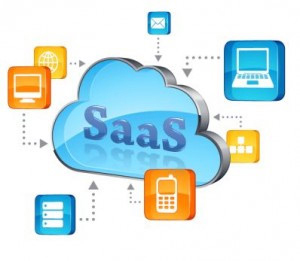Cloud Computing: Service Levels – article 4 of 4
Probably the most important part of the cloud computing contract revolves around the service levels and any service credit financial mechanisms (which are often not included within cloud service provider standard terms).
Unlike the software licensing arrangement wherein the customer can make a technical assessment of the software to be provided and decide whether or not the software meets the customer’s needs, the customer in a cloud computing arrangement relies on the contractual services descriptions, therefore, negotiating adequate service level and service credit arrangements is key.
Having a formula in place to determine the “Service Availability” as a percentage of time that the cloud computing service is actually available to users out of the time the cloud computer service provider is contracted to provide it for is important. The point from which to measure this is also key i.e. it can be measured at:
(a) the cloud service provider’s servers that host the application; or,
(b) the cloud termination point (where the link is made between the cloud service and the customer’s IT infrastructure); or,
(c) the end-user’s PCs.
Each of these have different implications for assessing the true and actual Service Availability and whichever one is the most appropriate or most acceptable point will depend largely on the party’s respective bargaining powers and costs involved as well as to how important a business requirement cloud computing is for the customer.
The applicable period in which Service Availability is to be assessed (the “Service Measurement Period” (SMP) should be specified because it has an impact on the calculation of service level. While a 24-7 service might appear to be attractive (particularly for global organisations), in practice this can lead to a need for considerable downtime before service credits are incurred. For example, a 98% service level would mean nearly 15 hours of downtime in a 31-day month before it was failed, whereas on an 8.00 am to 6.00 pm weekday service around four hours of downtime might be sufficient to trigger service credits.
Note that where a bundled product is provided e.g. e-mail, internet browsing and office applications, the Service Availability service level therefore should relate to the overall availability of the cloud computing service availability as well as the individual software applications.
System responsiveness measures are more difficult to specify in cloud computing contracts than service availability service levels. Operations such as printing and saving documents, which are simple in nature, may be relatively complex and take a long time.
Helpdesk responsiveness is equally important from a customer’s perspective. Different measures will be required where support is provided by phone only or via e-mail only. In particular, will the initial response involve providing answers and user support, or will it simply log the answer with a further call back to provide substantive support?
The customer must ensure that it is aware of any additional hardware that may be required and the service provider should provide for minimum infrastructure specifications. Insufficient hardware could result in insufficient capacity and service levels failing to be achieved.
Service credits can be a rather negative means of incentivising the cloud service provider to meet and exceed the target service levels. Service Credits can be one of two types:
- An openly negotiable contractual mechanism that sets out the different charges payable by the customer for different levels of service (Type 1); or,
- A form of liquidated damages (which should be a reasonable pre-estimate of the customer’s likely losses resulting from the cloud service provider’s failure to meet the service levels, otherwise they will represent an unenforceable penalty) (Type 2).
Customers should be made aware that if service credits are not expressed as “liquidated damages” (Type 1) in the contract, they will be regarded as Type 2 and the service provider will not be in breach of contract if it fails to achieve the target service levels. In contractual terms failure to meet a service level is not in itself a breach because the parties have agreed that a lower price applies for that lower level of service. Only if the supplier fails or refuses to pay those service credits lawfully due, will they be in breach of contract and any damages awarded will be:
- the value of the applicable service credits; plus,
- any interest for late payment.
A supplier may actually be better off incurring small monthly service credits (Type 2) rather than having to pay to fix whatever issue is preventing them meeting the service level (Type 1).
There are a number of performance measures, caps/ thresholds, rectification plans (essentially exit strategies) that can be out in place to counteract such issues and to cut down some the scope for future dispute.
Let us know if we can help you!
Author: Yvonne Morris
Email: yvonne@cloudlegalsupport.com
website: www.cloudlegalsupport.com
twitter: @CloudLegals
CloudLegal is a tech-enabled legal support consultancy which promises practical commercial and jargon-free advice. We support all company matters, commercial contracts/ Ts & Cs (including software and IT), employment & HR as well as data protection matters. We have various services including:
- our LawChat service which is a convenient way to speak to a legal expert;
- our suite of key Legal Templates available for pre-order purchase;
- our comprehensive Document CheckUp service for our templates;
- a free Request-a-Quote service for custom services from our in-house legal experts (and partner lawyers/ law firms);
- Last but not least, we offer a LawChat Legal Support Packages for business customers who need affordable, convenient and regular legal support. Areas include company setup, commercial contracts/ terms and conditions, intellectual property, data protection services and more. We also offer GDPR Support Packages in addition to Employment Support Packages.

